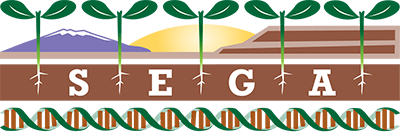You are here
Inferential ecosystem models, from network data to prediction.
Publication Type:
Journal ArticleSource:
Ecological applications : a publication of the Ecological Society of America, Volume 21, Issue 5, p.1523 - 36 (2011)ISBN:
1051-0761URL:
http://www.ncbi.nlm.nih.gov/sites/entrez?Db=pubmed&DbFrom=pubmed&Cmd=Link&LinkName=pubmed_pubmed&LinkReadableName=Related%20Articles&IdsFromResult=21830699&ordinalpos=3&itool=EntrezSystem2.PEntrez.Pubmed.Pubmed_ResultsPanel.Pubmed_RVDocSumhttp://www.ncbi.Keywords:
Bayes Theorem, Data Interpretation, Statistical, Ecology, Ecosystem, Forecasting, Models, Biological, Models, Statistical, Plant Transpiration, Plants, Time FactorsAbstract:
<p>Recent developments suggest that predictive modeling could begin to play a larger role not only for data analysis, but also for data collection. We address the example of efficient wireless sensor networks, where inferential ecosystem models can be used to weigh the value of an observation against the cost of data collection. Transmission costs make observations "expensive"; networks will typically be deployed in remote locations without access to infrastructure (e.g., power). The capacity to sample intensively makes sensor networks valuable, but high-frequency data are informative only at specific times and locations. Sampling intervals will range from meters and seconds to landscapes and years, depending on the process, the current states of the system, the uncertainty about those states, and the perceived potential for rapid change. Given that intensive sampling is sometimes critical, but more often wasteful, how do we develop tools to control the measurement and transmission processes? We address the potential of data collection controlled and/or supplemented by inferential ecosystem models. In a given model, the value of an observation can be evaluated in terms of its contribution to estimates of state variables and important parameters. There will be more than one model applied to network data that will include as state variables water, carbon, energy balance, biogeochemistry, tree ecophysiology, and forest demographic processes. The value of an observation will depend on the application. Inference is needed to weigh the contributions against transmission cost. Network control must be dynamic and driven by models capable of learning about both the environment and the network. We discuss application of Bayesian inference to model data from a developing sensor network as a basis for controlling the measurement and transmission processes. Our examples involve soil moisture and sap flux, but we discuss broader application of the approach, including its implications for network design.</p>
- Log in to post comments
- Google Scholar
- RTF
- EndNote XML
- RIS
Theme by Danetsoft and Danang Probo Sayekti inspired by Maksimer
